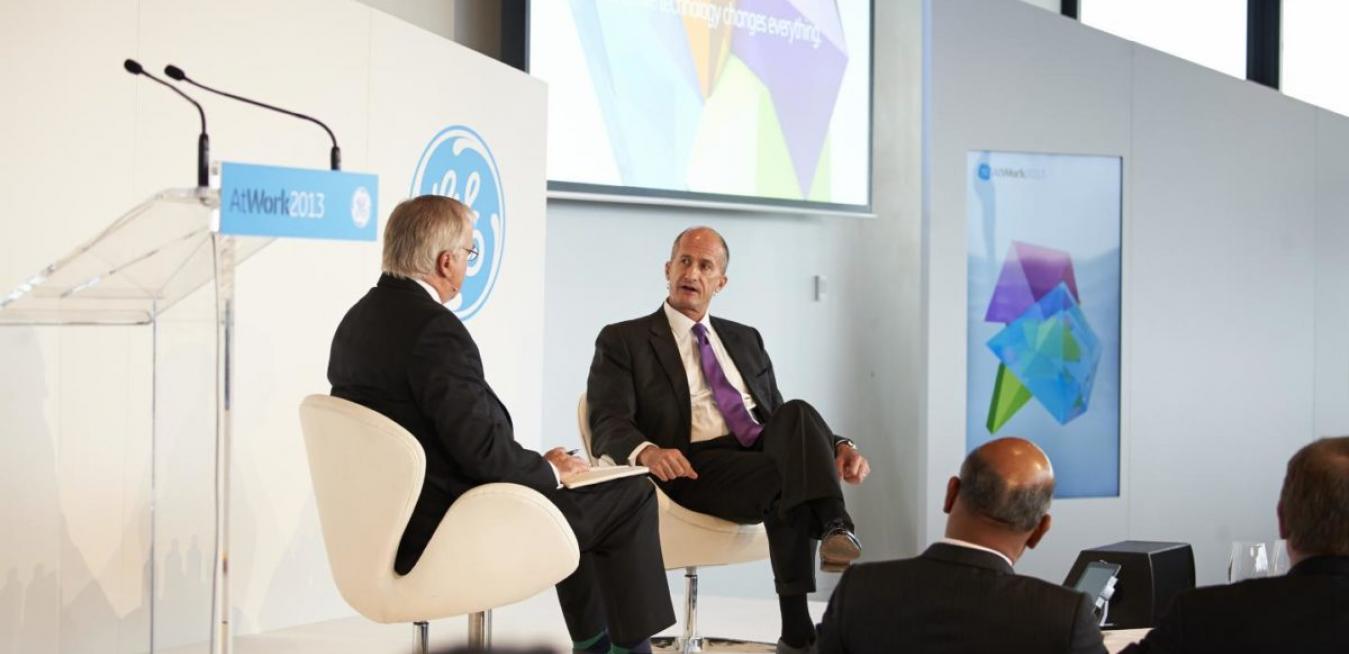That’s a big question for a company like GE, said John G Rice, GE Vice President and the man responsible for the company’s operations outside of the United States market.
Mr Rice said answering the cannibalisation question requires some perspective. If the cheaper machine is simply displacing the larger device, then the inexpensive option may not be a great idea.
“But what if the goal is to make the stethoscope redundant, and to bring the technical capabilities of an ultrasound to smaller facilities?” Mr Rice said. “Then it changes how you look at the picture.”
Mr Rice was interviewed on Tuesday during GE’s At Work conference in Sydney by Alan Kohler, editor-in-chief at Business Spectator.
GE has radically changed its culture to actively encourage the cannibalisation of old, but perhaps profitable, products with newer, simpler products that increase the organisation’s reach into the market.
“You can expand the market,” he said. “We have had to create a generation of engineers wanting to work on smaller, more accessible products. You have to cannibalise otherwise you are going to get trapped [by the past]. It has to be part of your DNA.”
The company has also changed the way it works with customers after coming to the realisation that a one-size fits all approach simply doesn’t work for different organisations operating across myriad geographical borders.
“What we need to ask is, ‘What is it that is special about the way you want to run your equipment?’ and we can tailor that to you,” Mr Rice said. “And our challenge is that we can’t come out with just one thing … it may be different for customers in different countries.”
Mr Rice said one of the key elements in servicing global clients and maintaining global supply chains has been the rise of machine-to-machine communications, or what is colloquially known as “the industrial internet”.
This means internet-connected devices talking to one another and exchanging data without human intervention – at least initially. The devices can then pass actionable data up to human operators as it becomes appropriate.
He said the efficiency that comes from managing these sorts of downstream communications – such as a turbine reporting on vibration, heat or some other variable – has the potential to offer much larger cost savings to customers than simply wringing an additional percentage point of efficiency out of a given product.
“There is a lot of money to be saved there. For every 1 per cent improvement in aviation, rail or in power, you are talking about potential savings of billions of dollars,” he said.
The rise of the industrial internet also puts greater emphasis on managing the lifecycle costs of a product. This represents a significant departure from the break/fix mentality of the past, where a company would sell a product and then charge to fix it when it went wrong.
According to Mr Rice, there’s significant upside for both GE and its customers by moving to a lifecycle management approach.
“We had to figure out how to invest in technology to allow assets to operate more efficiently and effectively – and as part of that investment we would get some benefit,” Mr Rice said. “If we do not deliver that performance, we pay a penalty, but if your equipment operates better, we make more money.
“In other words,” he added, “lifecycle management and the internet of things means we have skin in the game.”





